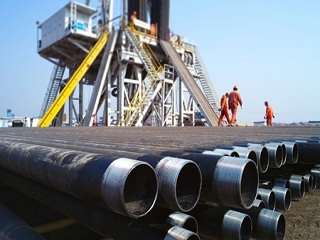PTT Exploration and Production (PTTEP) has discussed with Vietnam two more expanded investments for oil and natural gas exploration drilling there with production of 490 million cubic feet/day expected.
PTTEP senior manager on Safety, Security, Health and Environment, Jirapong Dharaphop, said the company exchanged information on the exploration field with Vietnam and was invited to take part in a joint venture with Vietnam to increase investment in the country after a previous success.

The two projects under development are the Vietnam 48/95 field, in which PTTET is a 7-percent shareholder, and Vietnam 52/97, in which the firm holds 8.5 percent of shares. Both projects have Chevron as the main shareholder and project manager.
Currently, it is in the last stage of negotiation with the Vietnamese government on natural gas prices. It will then take another 42 months to lay the piping in the sea, with first production expected in 2016 with a capacity of 490 million cubic feet/day.
Jirapong said the advantages of investing in Vietnam are that it is Thailand’s neighbor and both nations have good relations. Also, Vietnam has potential for oil exploration drilling.
Exploration is done mostly on Ho Chi Minh City’s southeastern approaches, he added.
PTTEP currently has four investment projects on the field in Vietnam. The first two are Vietnam 16-1 and Vietnam 9-2, now under construction.
Vietnam 16-1 is expected to produce crude oil at 55,000 barrels/day within the fourth quarter from the current 53,000 barrels/day, and to produce natural gas at 33 million cubic feet/day. PTTEP holds 28.5 percent of shares in this project.
Vietnam 9-2 is to produce crude oil at 6,600 barrels/day and natural gas at 15 million cubic feet/day. The Thai company holds a 25-percent share.
According to Jirapong, the Vietnamese government is promoting exploration and production for petroleum. The country has one oil refinery with a production capacity of 140,000 barrels/day. However, domestic demand is higher than current production capacity.




